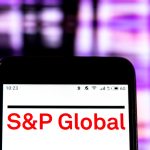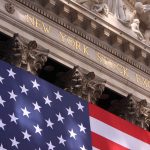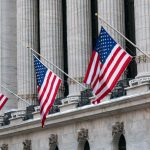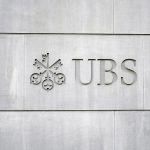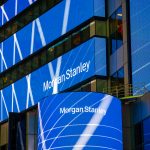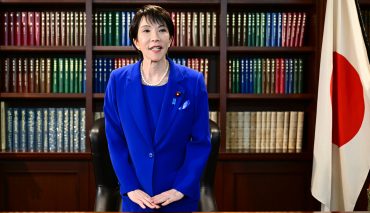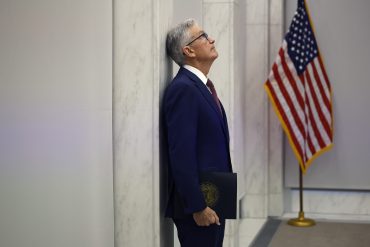
- Federal Reserve
- Interest Rates
- Monetary Policy
Federal Reserve Signals September Rate Cut as Labor Market Cools
6 minute read

Federal Reserve’s expected rate cut boosts tech stocks as unemployment rises and market confidence grows
Key Takeaways
- Fed signals September rate cuts with 93.2% market probability as Powell cites slowing labor market and persistent inflation risks at Jackson Hole symposium.
- Tech sector drives 26% of S&P 500 Q2 earnings growth with “Magnificent 7” companies outpacing all other sectors combined despite macroeconomic uncertainty.
- S&P 500 jumps 1.3% following Powell’s speech as lower borrowing costs particularly benefit growth stocks with long-duration cash flows in the tech sector.
Introduction
Federal Reserve Chair Jerome Powell signals a pivotal shift toward monetary easing, delivering remarks at Jackson Hole that position the central bank for its first rate cut since December 2024. Speaking at the annual symposium Friday morning, Powell indicates conditions “may warrant” interest rate reductions as the Fed balances twin risks of labor market cooling and persistent inflation above target levels.
Markets react immediately to Powell’s dovish tone, with the S&P 500 gaining 1.3% in late morning trading. The tech sector emerges as a primary beneficiary of the anticipated policy shift, as lower borrowing costs reduce discount rates for growth companies with extended cash flow horizons.
Key Developments
Powell’s Jackson Hole address marks a notable evolution from the Fed’s previously cautious stance on rate adjustments. The central bank chair acknowledges mounting downside risks to employment following July’s disappointing jobs report, which showed job growth averaging just 35,000 over the past three months.
The unemployment rate edges up to 4.2% in July, while core PCE inflation remains elevated at 2.9%, creating a complex dual mandate challenge. Powell warns that tariff-driven price increases could create “one-time shifts in the price level,” though the Fed stands ready to manage longer-lasting inflation dynamics should they emerge.
According to CNBC, market participants price in a 93.2% probability of a September rate cut, up from 72% prior to Powell’s remarks. This shift reflects growing confidence that the Fed prioritizes employment stability over inflation concerns in the near term.
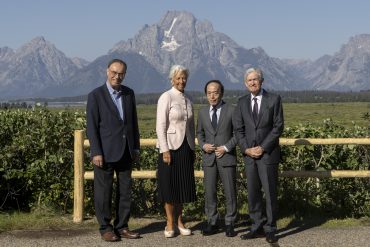
Market Impact
Technology stocks lead the market rally as investors anticipate reduced capital costs benefiting growth-oriented companies. The sector’s “Magnificent 7” companies demonstrate particular resilience, having contributed 26% of S&P 500 earnings growth in Q2 2025 despite broader economic headwinds.
Lower interest rates amplify valuations for companies with long-duration cash flows, a characteristic that defines many leading tech firms. NVIDIA and Microsoft accelerate AI infrastructure investments, creating what analysts describe as a “flywheel effect” where rising computing demand drives further capital expenditures.
Market concentration risks emerge as a key concern, with analysts noting that a 2% decline in Apple’s stock price can create ripple effects across the broader S&P 500 index. This concentration dynamic highlights the outsized influence of megacap technology companies on overall market performance.
Strategic Insights
The intersection of monetary policy and technology sector fundamentals creates distinct advantages for established players with robust ecosystems. Large-cap firms like Apple and Microsoft benefit from economies of scale and network effects, reinforcing market dominance in a low-rate environment.
AI integration across products and services accelerates as companies leverage favorable financing conditions for research and development investments. Federal Reserve economists express cautious optimism about AI’s productivity potential, though they emphasize that adoption speed and breadth will determine ultimate economic impact.
Fintech innovation gains momentum through advances in digital infrastructure, blockchain applications, and artificial intelligence integration. However, these developments introduce new regulatory considerations and systemic risks that require ongoing dialogue between industry leaders and policymakers.
Expert Opinions and Data
Heather Long, chief economist at Navy Federal Credit Union, characterizes Powell’s remarks as decisive policy guidance. “That’s about as clear cut as Powell can get that he has shifted his view since July and is leaning toward a cut in September,” Long states, acknowledging downside employment risks following July’s jobs data.
Investment strategists recommend overweighting large-cap technology firms with sustainable competitive advantages while hedging against policy uncertainty through sector ETFs or Treasury futures. Market analysts emphasize that tech sector earnings, rather than Fed policy alone, drive market performance in 2025.
High-tech industries contribute disproportionately to new business formation since 2019, signaling continued entrepreneurial activity and sector resilience. This trend supports longer-term growth prospects despite near-term macroeconomic volatility and regulatory uncertainties.
Conclusion
Powell’s Jackson Hole address establishes clear expectations for September monetary policy easing while highlighting the technology sector’s central role in current market dynamics. The combination of anticipated rate cuts and robust tech earnings creates favorable conditions for growth-oriented investments, though concentration risks and policy uncertainties require careful monitoring.
The Fed’s dual mandate challenges persist as labor market cooling intersects with inflation concerns, making September’s policy decision critical for both monetary policy credibility and market stability. Technology companies maintain strong fundamentals through AI-driven innovation and capital investment, positioning the sector to capitalize on improved financing conditions while navigating evolving economic conditions.
